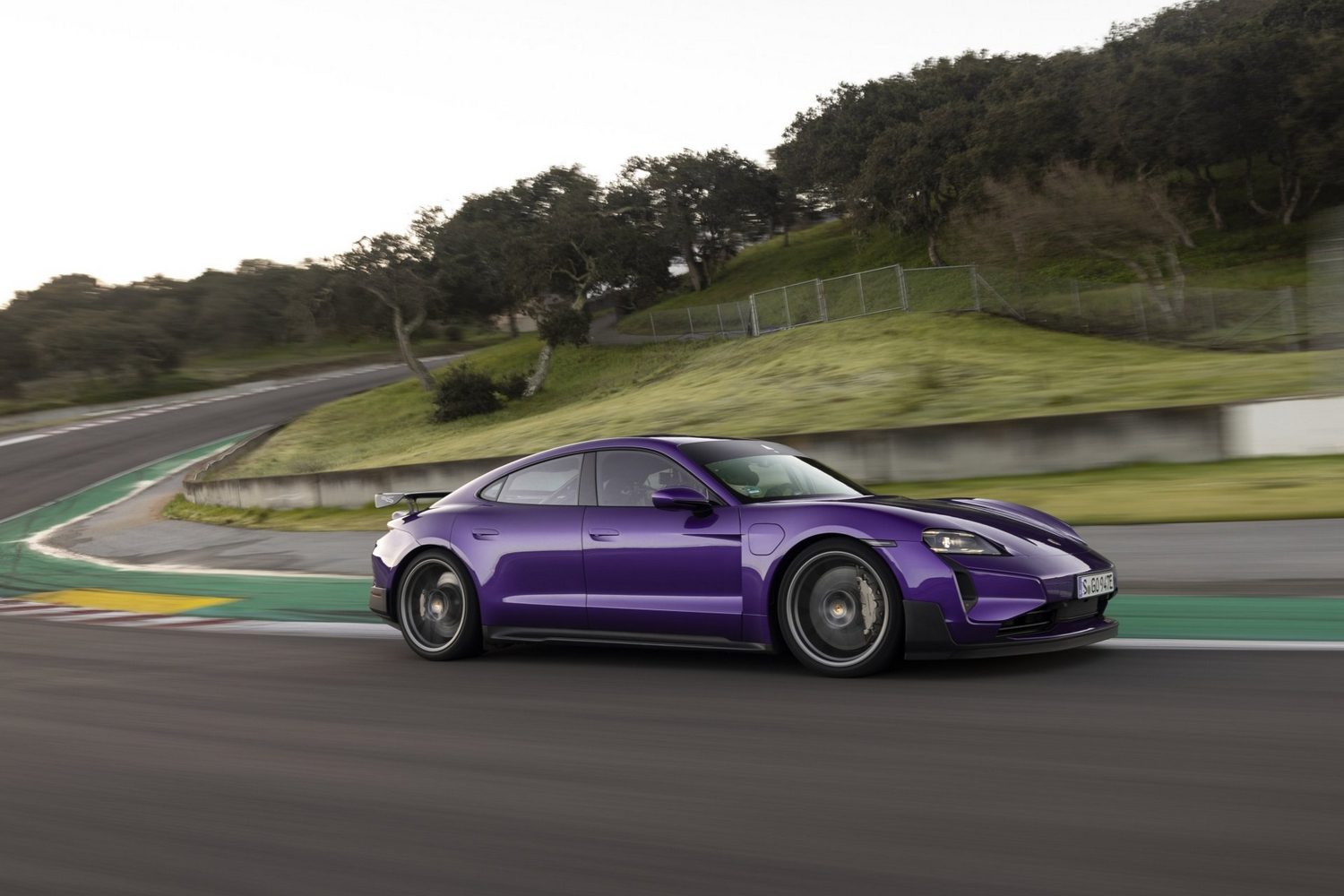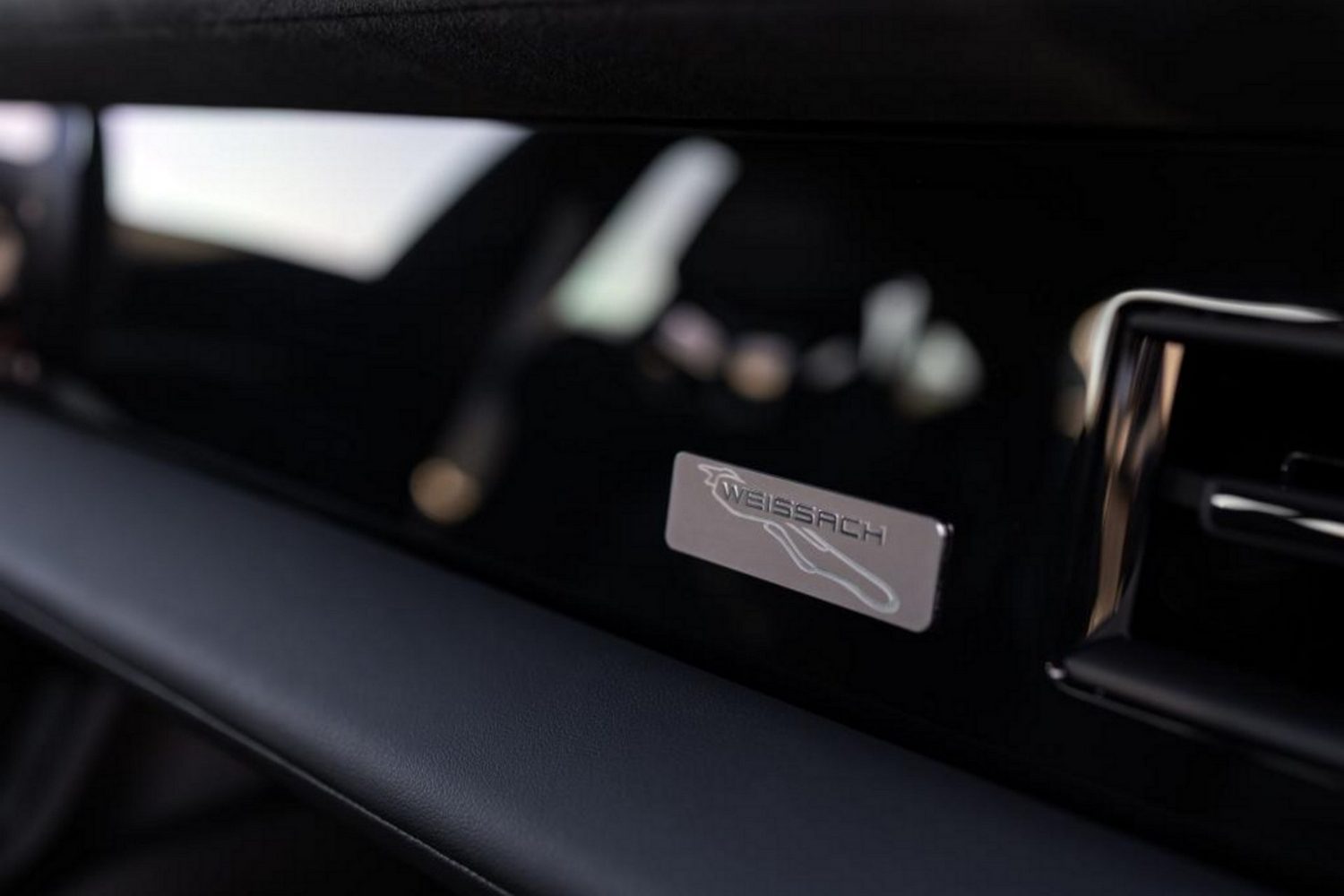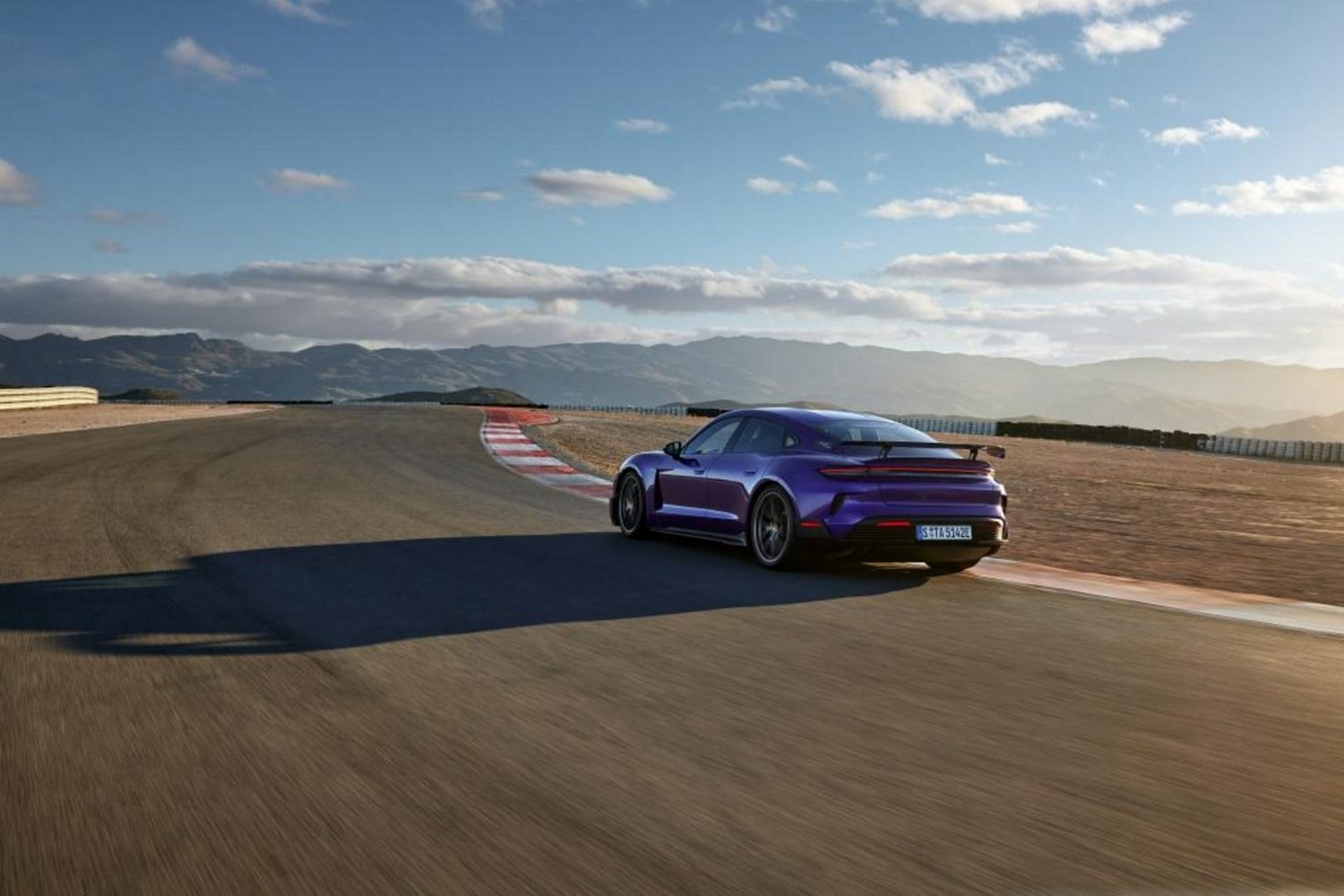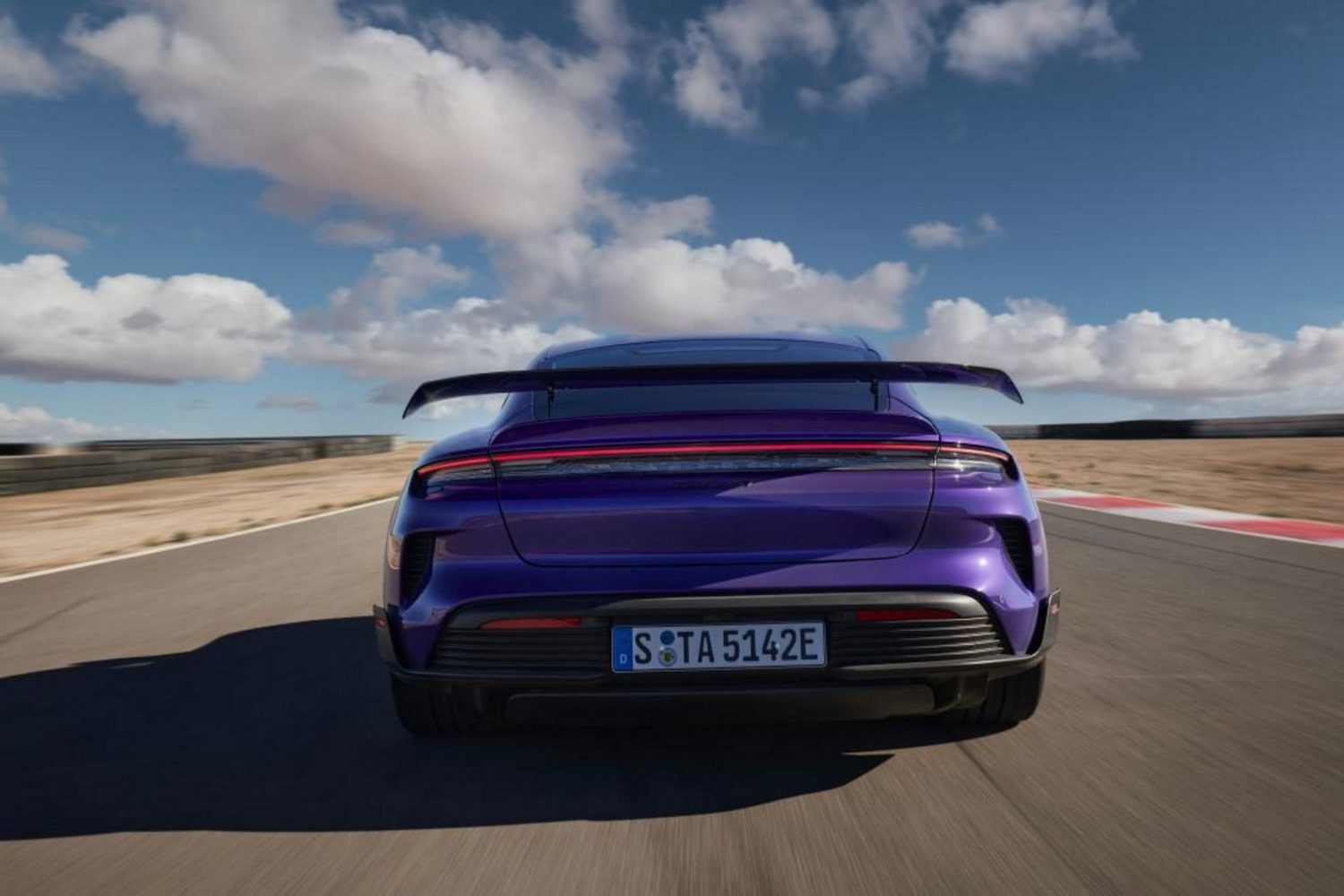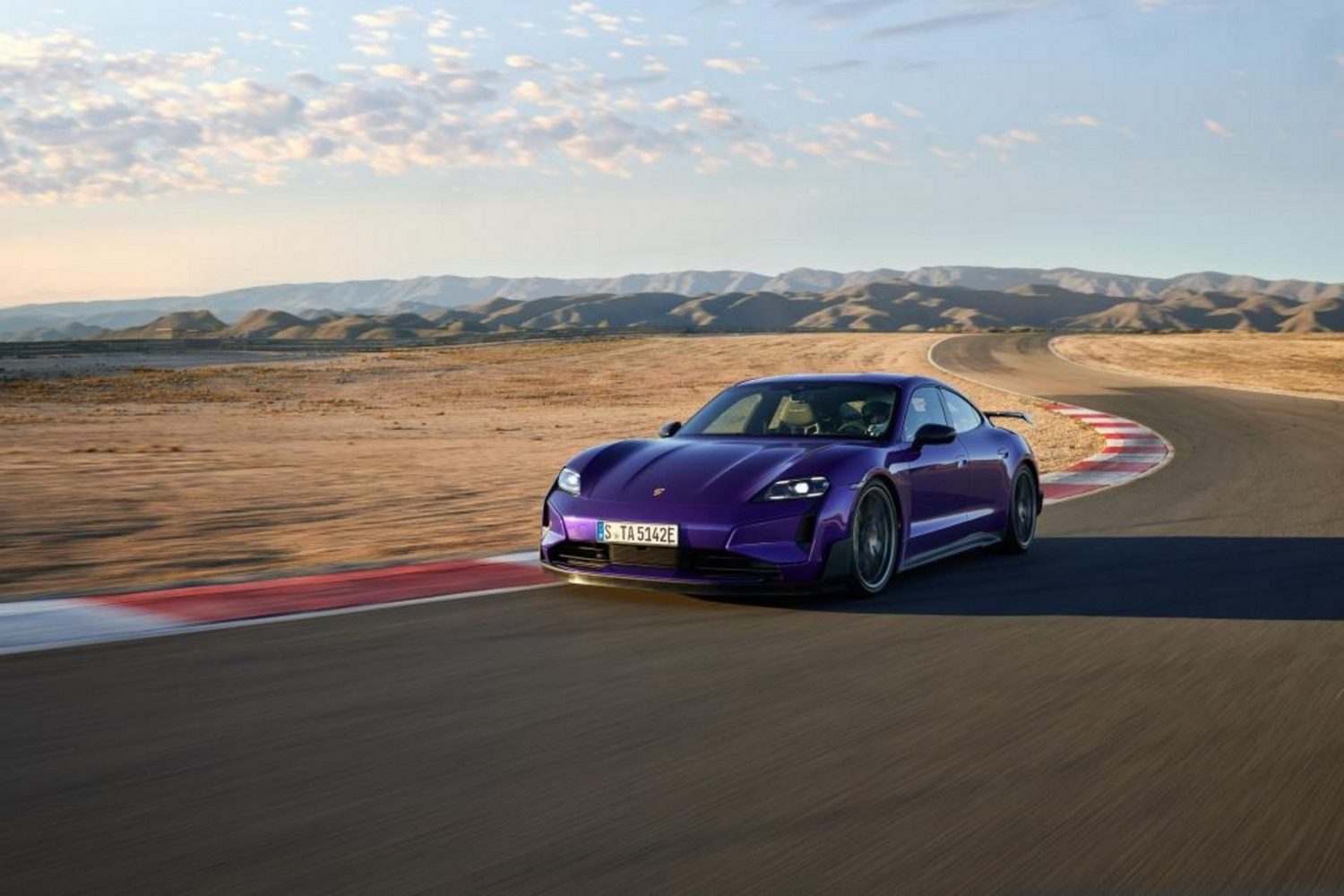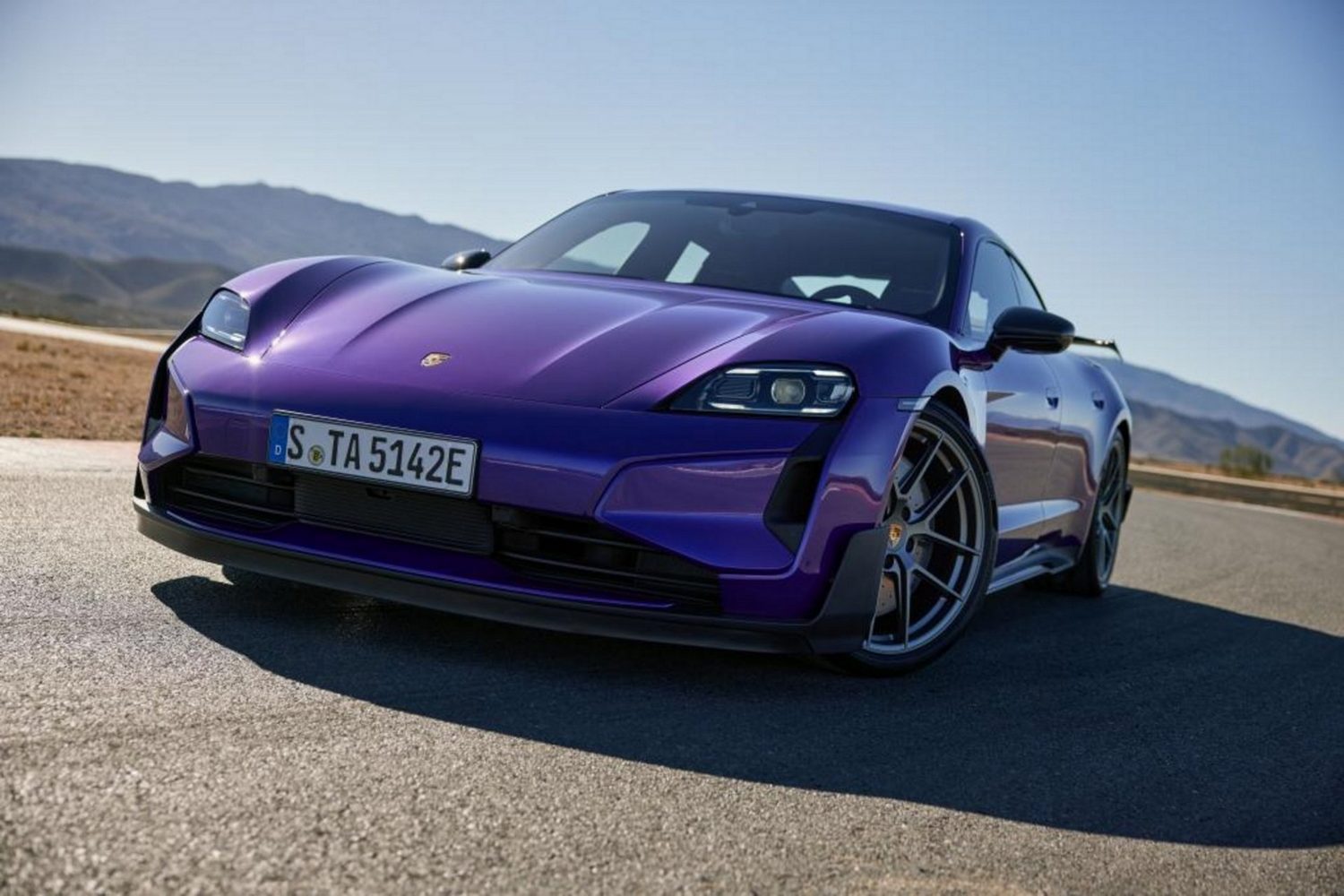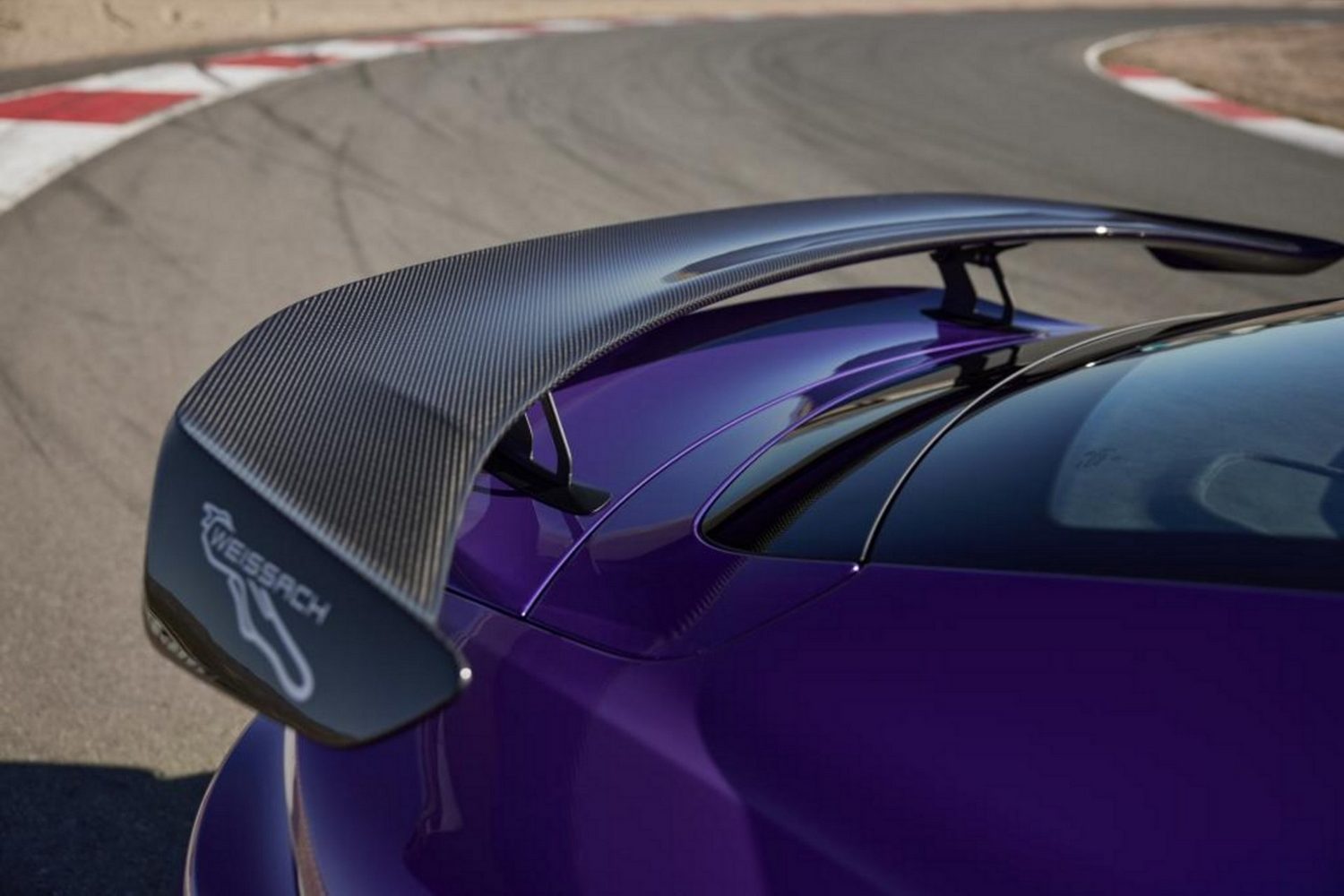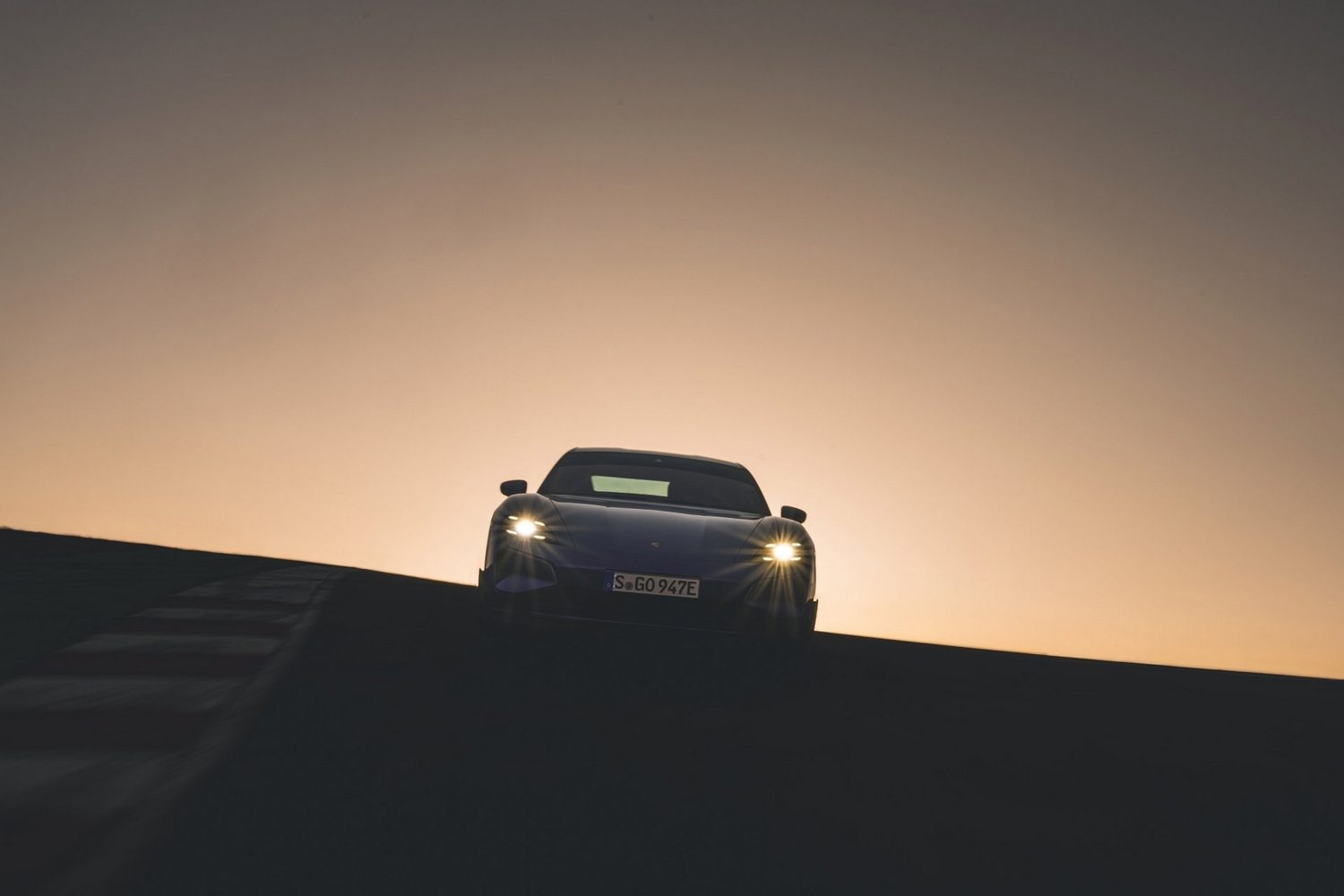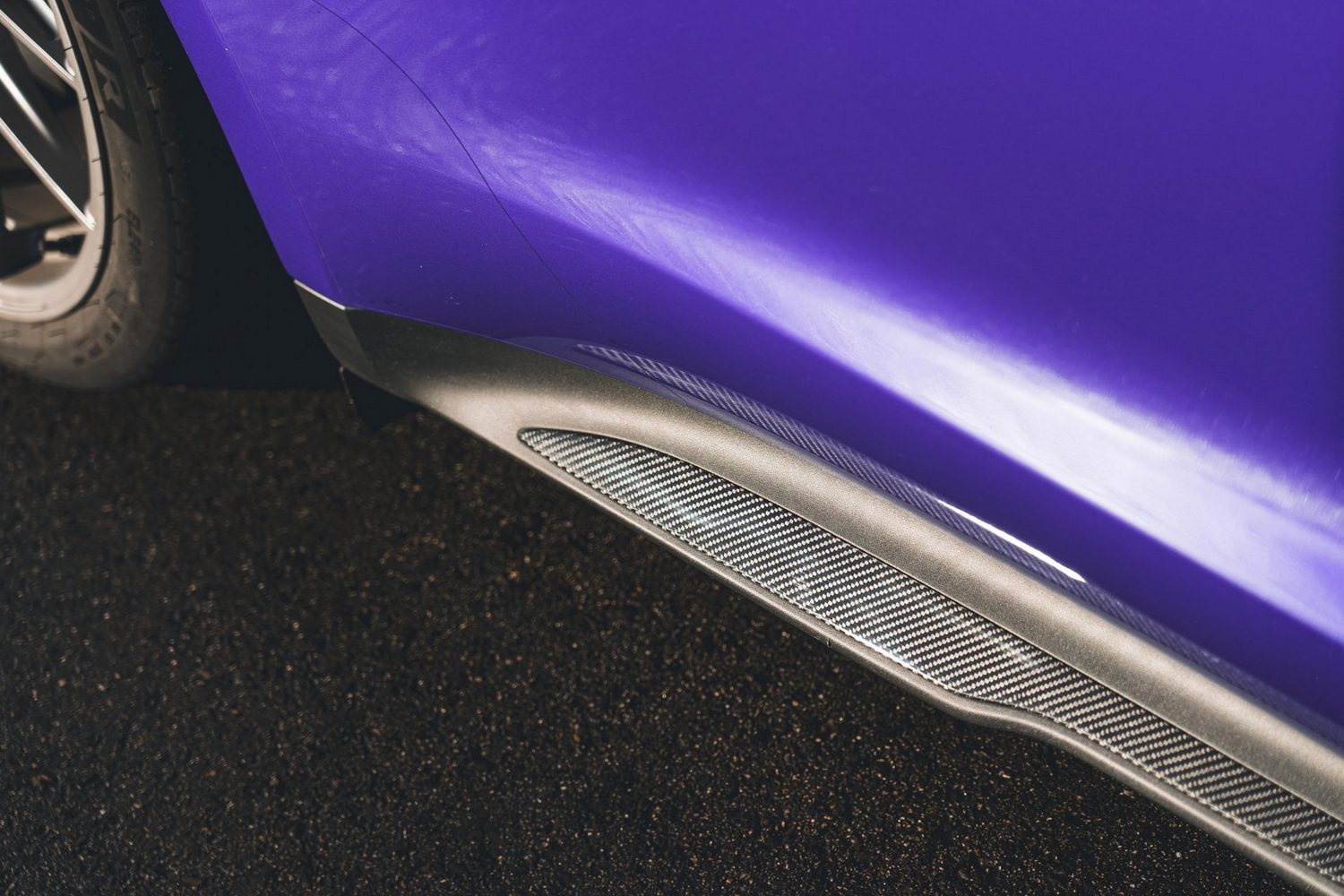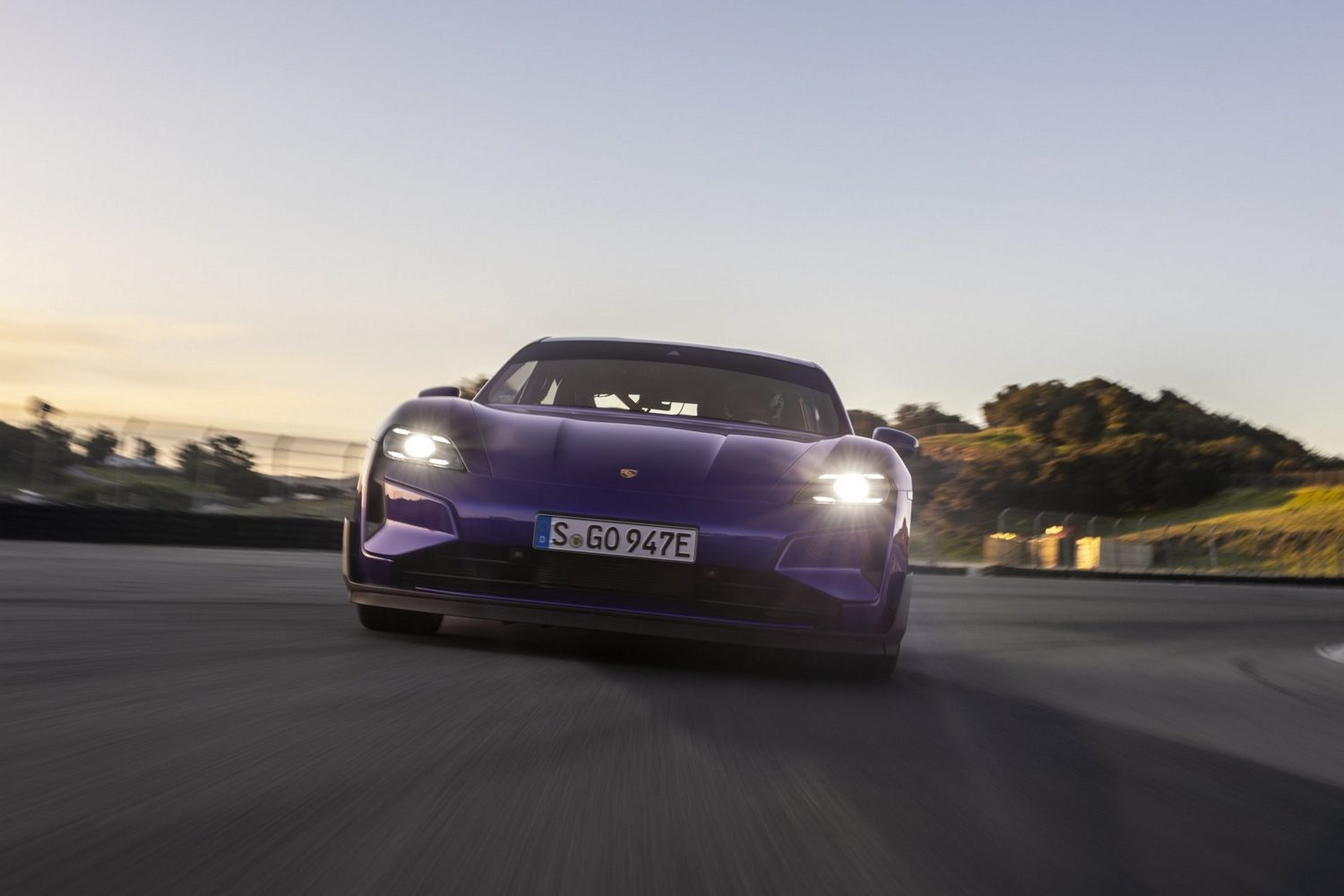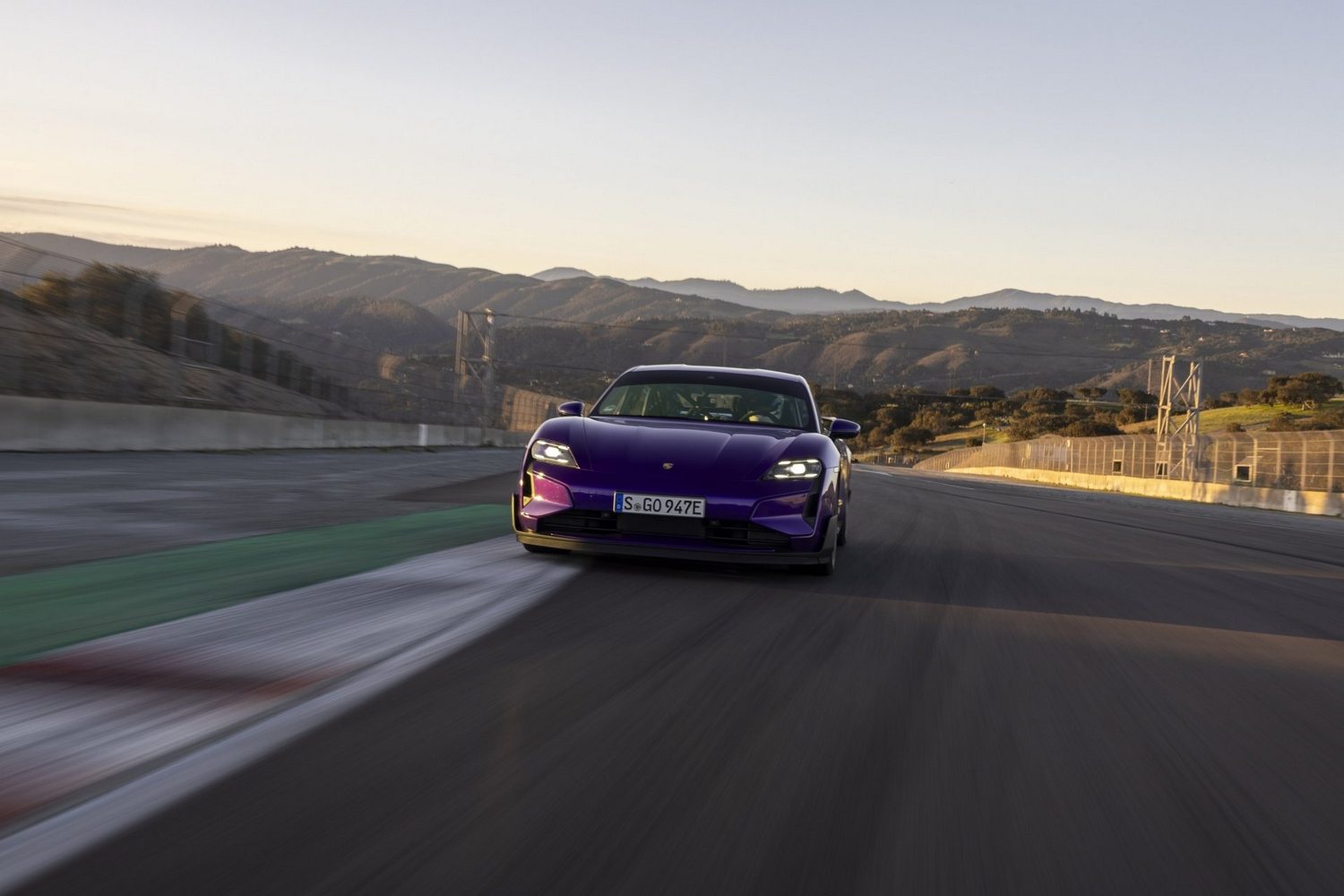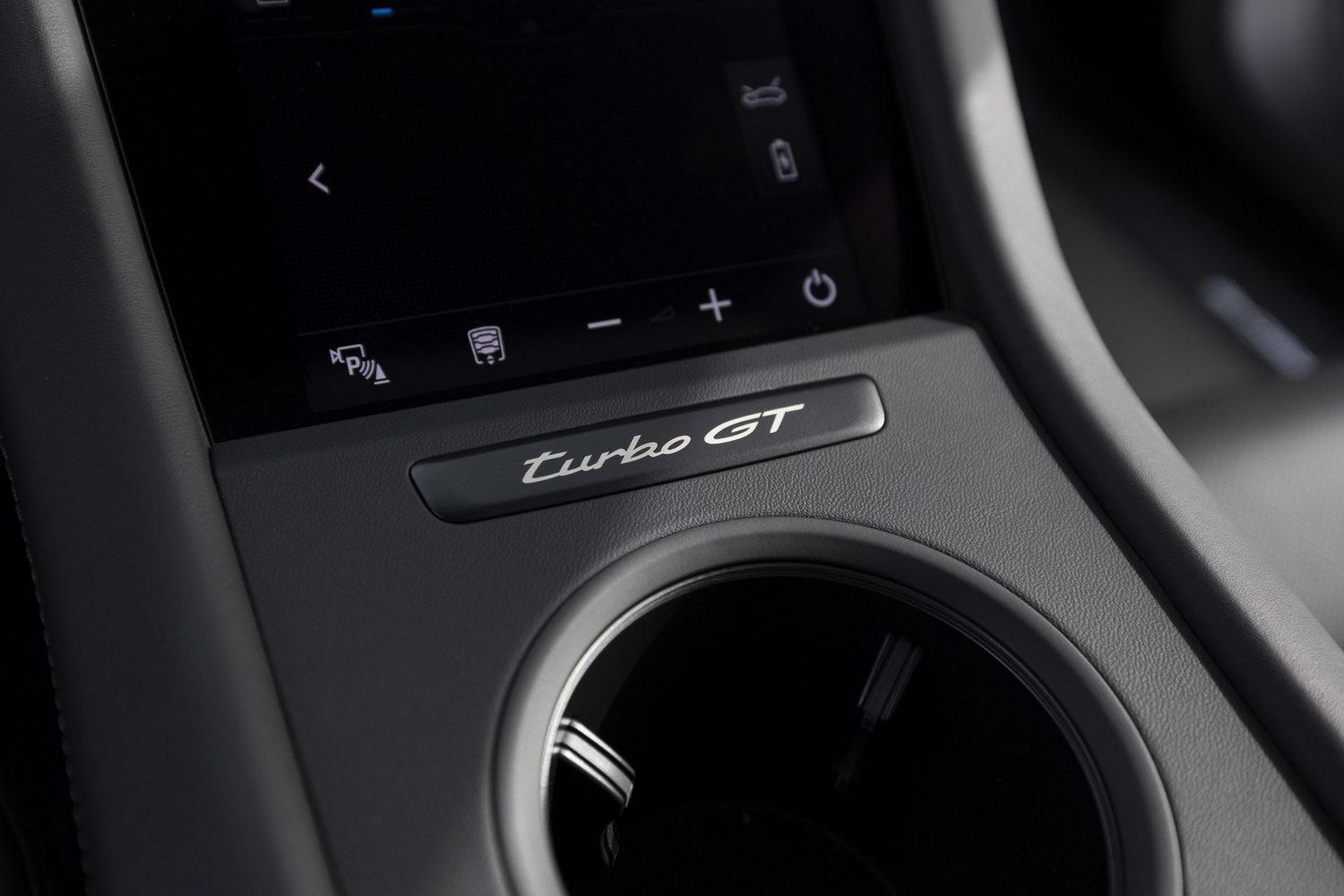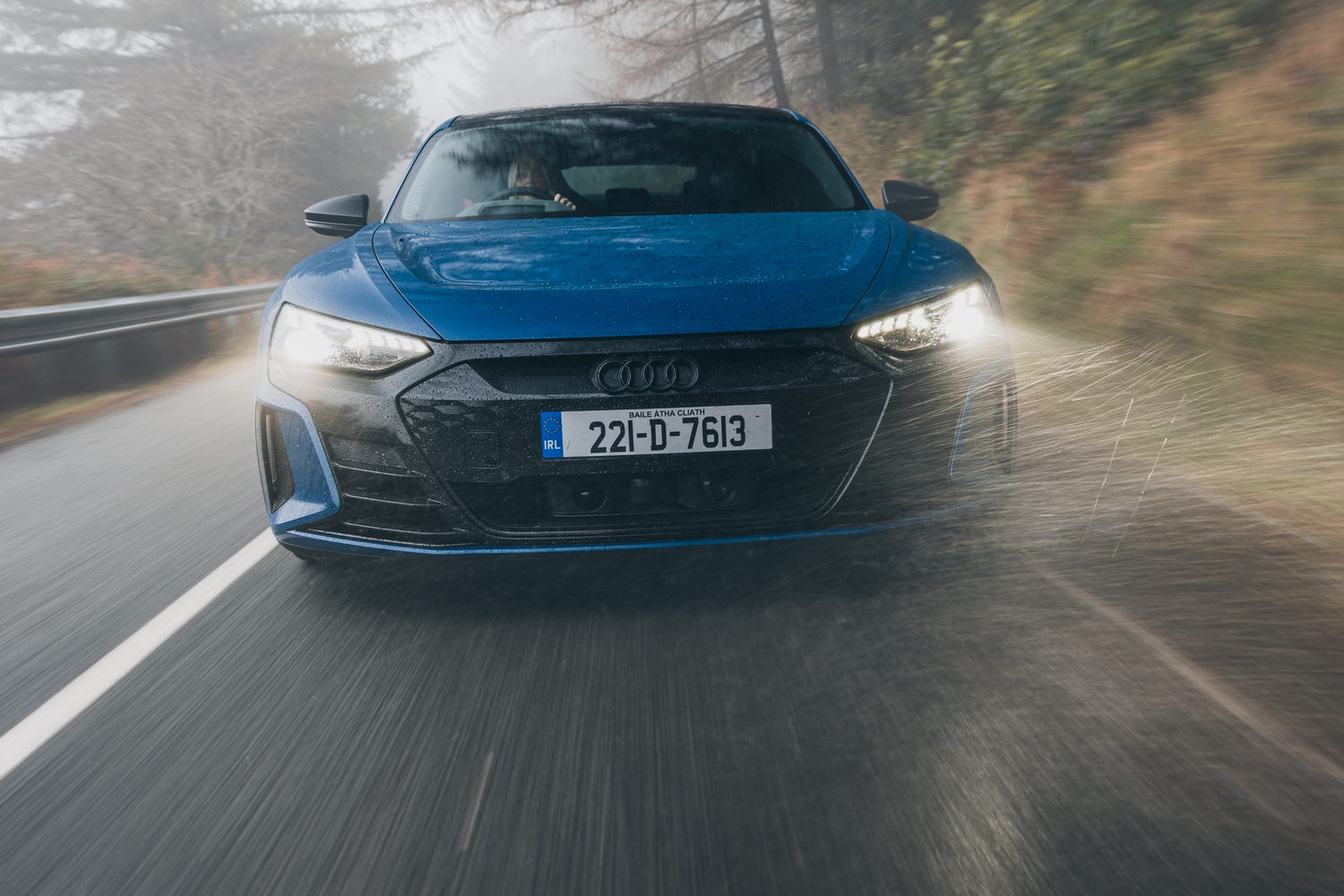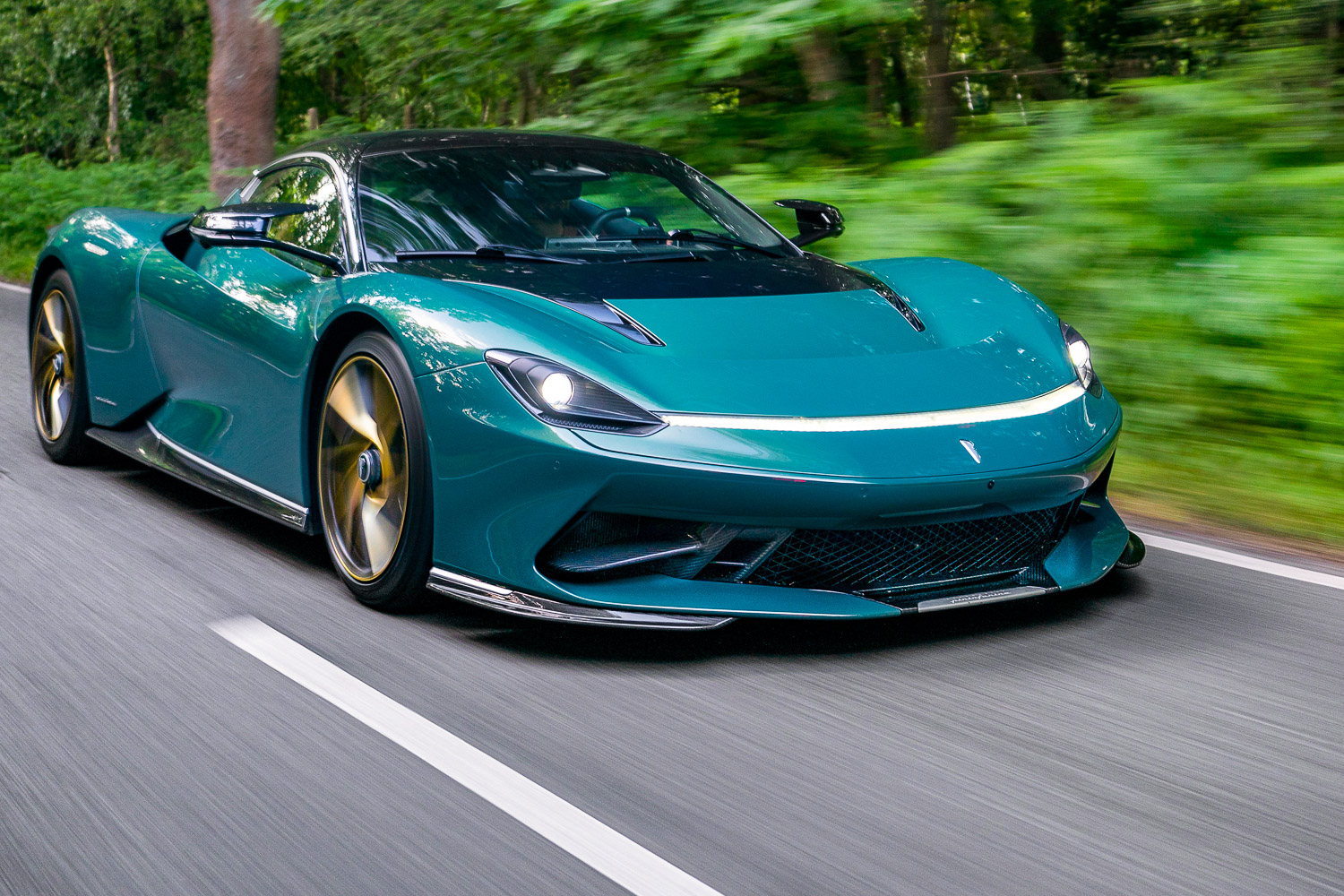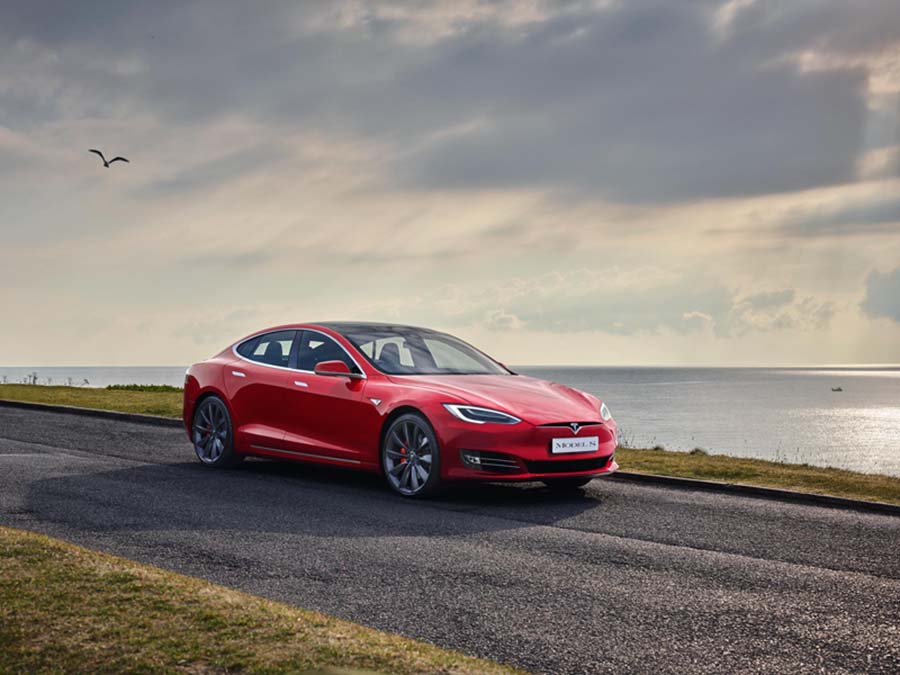Porsche, it seems, is proud of the Taycan Turbo GT (the new and most powerful version of its successful Taycan electric saloon) and the numerous lap records it already holds. Clearly designed as a halo product rather than a volume proposition, it's a showcase of what the Taycan can do, and though Porsche isn't quite ready to let us have a go behind the wheel, the German company did take us for a spin around its Leipzig test track. At full chat.
In the metal
Although the Taycan Turbo GT is clearly a far more aggressive version of the recently updated Taycan saloon, Porsche hasn't completely changed the recipe. This is still recognisably a Taycan - albeit one painted purple.
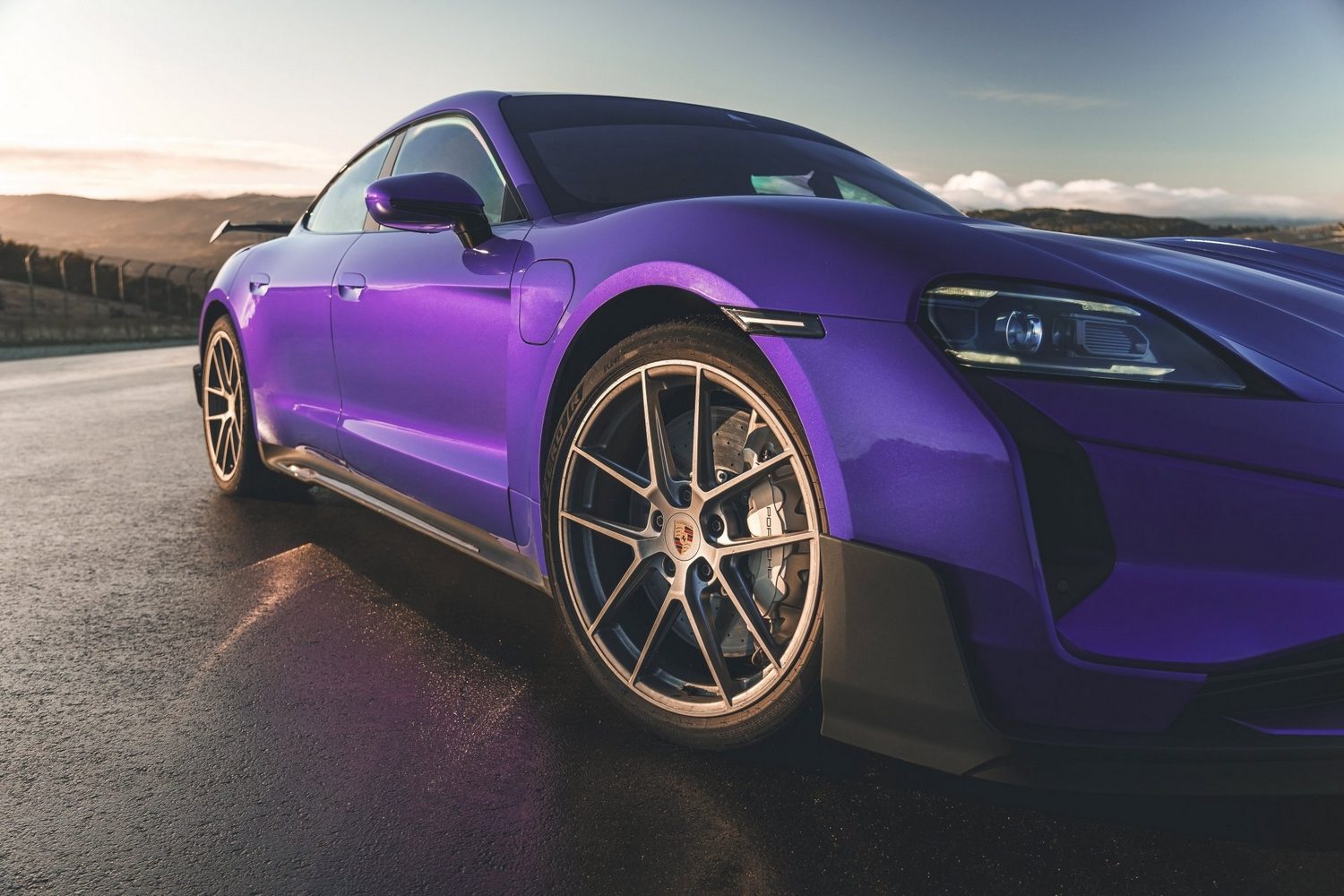
But the Taycan in which we rode shotgun wasn't just any Taycan Turbo GT. It also came with the Weissach package, which not only accelerates the standard car's thirst for weight-shedding, but also gives it more aerodynamic clout. If you want to go really, really fast, then this is the Turbo GT in which to do it.
Outside, you'll notice some major upgrades, including the massive rear wing with Weissach logos on the endplates, which sits alongside some underbody aero to create a total of up to 220kg of downforce. That's in addition to the standard Turbo GT exterior features, which include a model-specific front spoiler, carbon-fibre trim on the door mirrors and B-pillars, and Matrix LED headlights, which are lighter than the optional HD Matrix LED units. Look closely, and you'll also notice the Weissach package removes one of the Taycan's two charging ports, leaving just one on the front wing. And even that loses its electric opening system in the name of weight reduction.
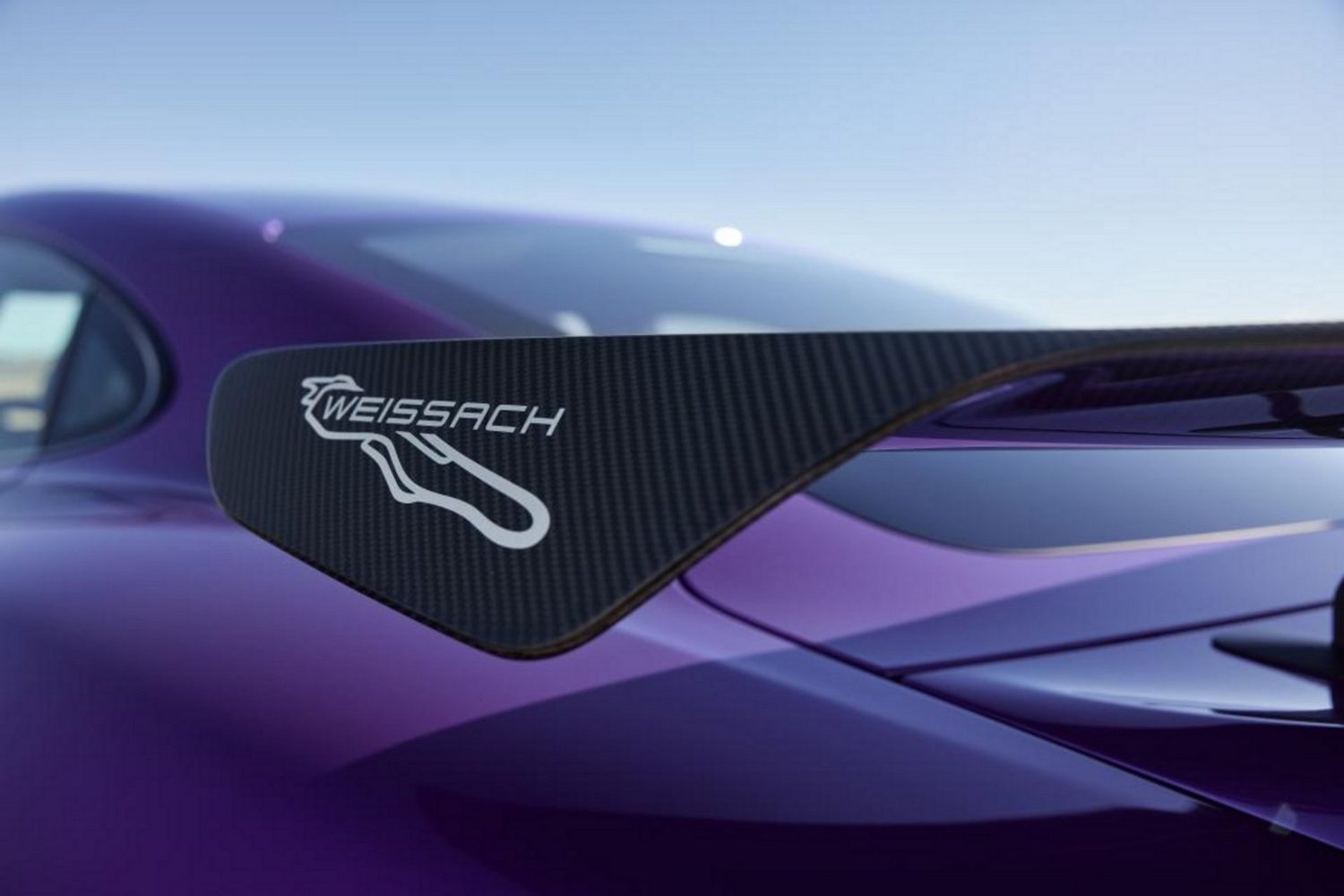
Customers can add to the overall effect by choosing a decal set that makes the car look even more track-inspired, but it looks striking enough to us without doing that to it. Particularly in this bright purple hue.
The cabin, however, is even more dramatically upgraded - particularly in our high-speed taxi. All Turbo GT models get bucket seats as standard (more comfortable options are available at no extra cost) and a Race-Tex-trimmed steering wheel, but the Weissach package gets you a more pared-back cabin, with no clock on the dash, no floor mats and less insulation material. But the biggest change is the removal of the rear seats. Instead, Weissach cars get a kind of storage compartment behind the front seats, but the car we rode in had a massive roll cage fitted for track use.
Fitting the roll cage clearly took some doing, as parts of the door trim had to be hacked away to accommodate the tubing, but despite some rough saw-work, interior quality remained as high as you'll find in any Taycan, with plush materials and exquisite fit and finish. Rough cutouts aside, that is.
The slight problem was a lack of access. Contorting less-than-flexible, crash-helmeted motoring journalists into cars is not always easy at the best of times, but navigating the roll cage required some folding of joints that hadn't folded that much for some years. Contortionism complete, though, the cabin was quite comfortable, with the seats proving supportive and very capable of holding drivers and passengers in place. Buyers - who won't get the option of Porsche's aftermarket roll cage - will doubtless find it even more comfortable.
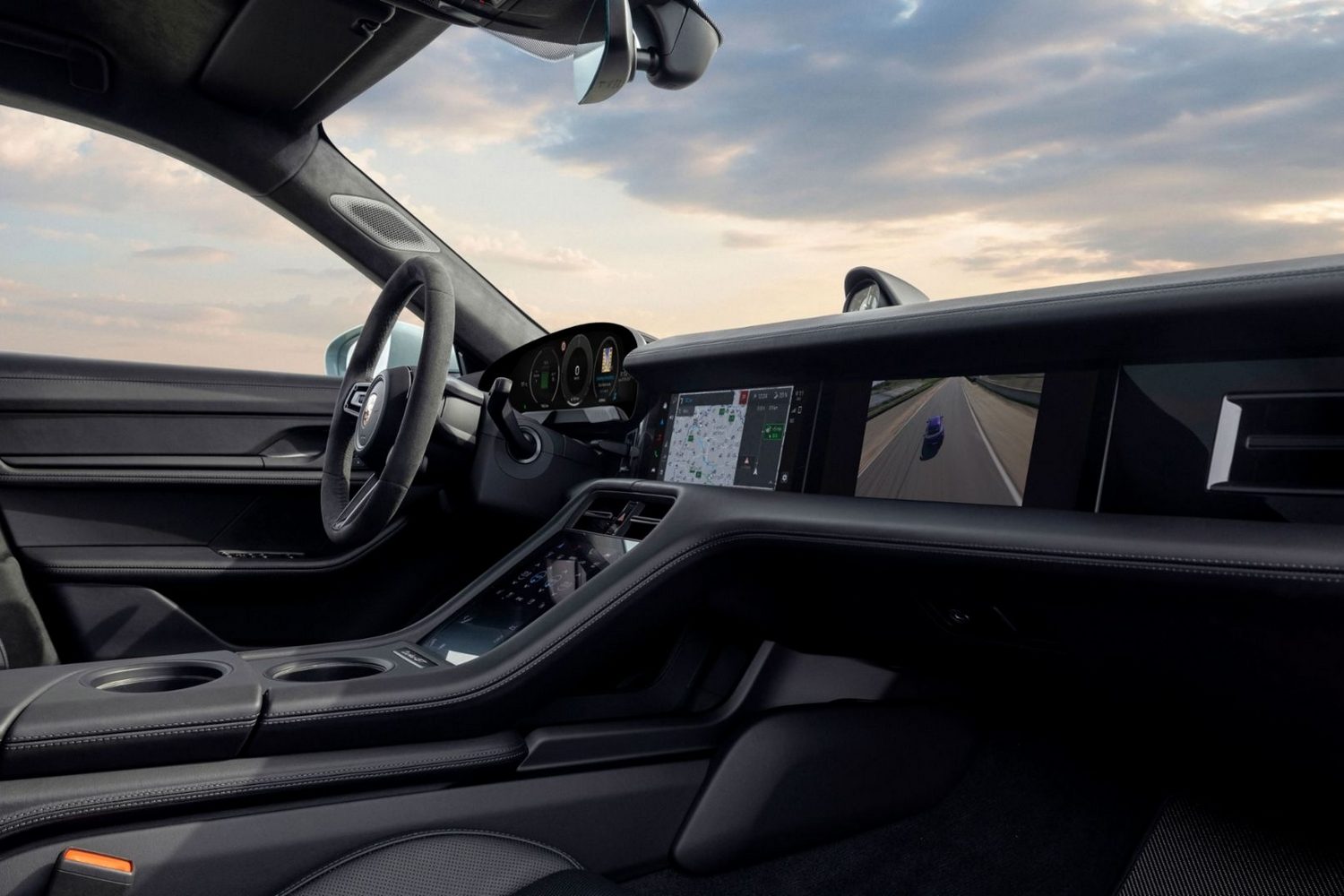
We didn't get to play with the on-board technology, but an upcoming review of the new Taycan models will cover that soon. Suffice to say, it isn't the focus of the Taycan Turbo GT, and though Porsche is at pains to point out technology is a key part of its future offering, the Turbo GT is all about performance.
Nevertheless, practicality is still a consideration, albeit a small one. Yes, the Weissach package removes the rear seats, but you still get a 326-litre boot that's just 40 litres smaller than that of the Turbo S - although it's about 80 litres down on a basic, rear-wheel-drive Taycan. Nevertheless, it's a useful space.
Driving it
A quick flying lap of Porsche's Leipzig test track experienced from the passenger seat does not a comprehensive review make, but it was certainly enough for the Turbo GT to make an impression.
First of all, it's monstrous in a straight line. The point of the Weissach package is primarily weight-shedding (although Porsche's engineers would doubtless cite aerodynamics, too), and fully optioned cars weigh around 75kg less than their Turbo S equivalents, which is about the weight of a small to medium-sized adult.
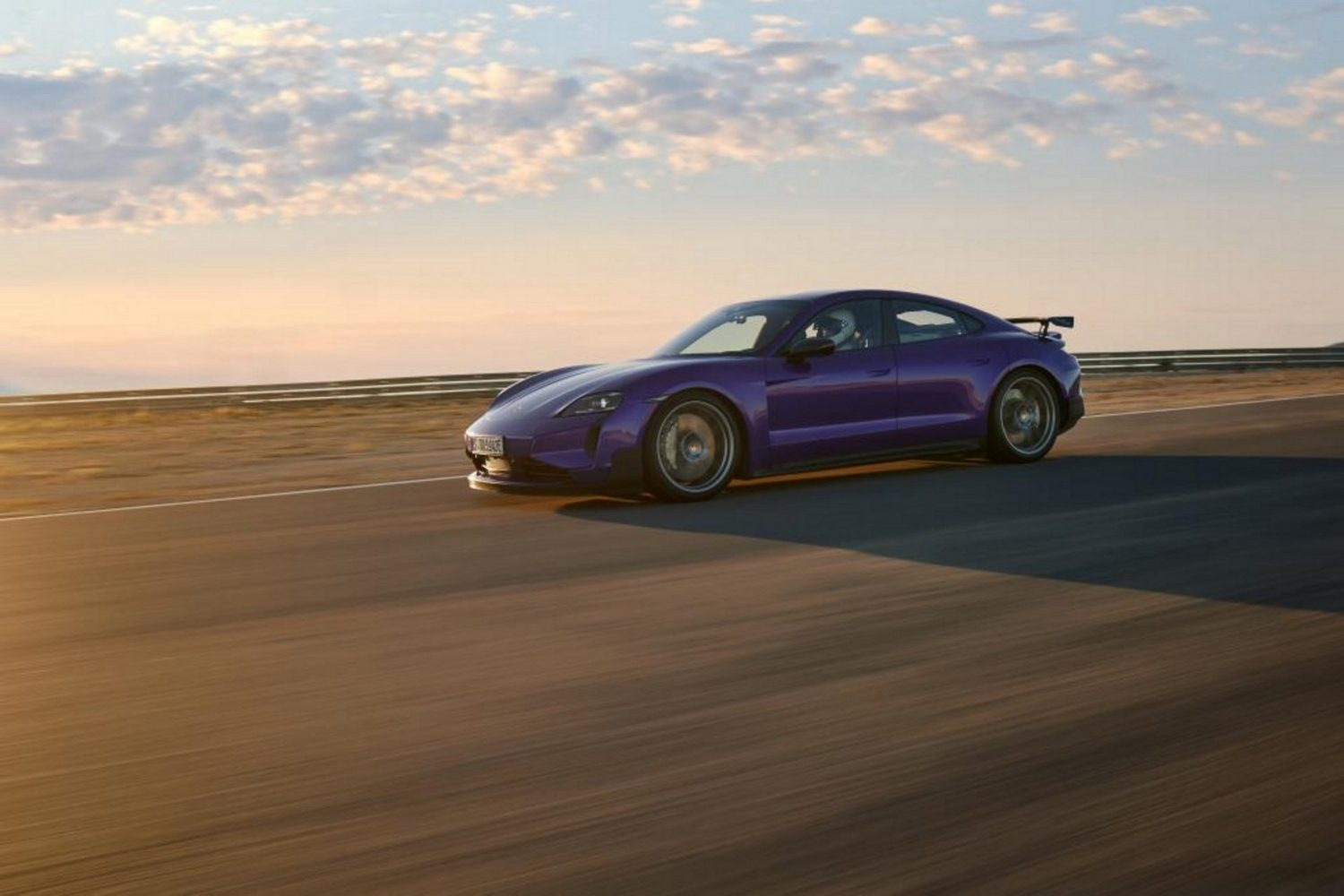
Combine that with two electric motors that work together to produce 789hp in their most dialled-back setting, 1,034hp with overboost and a massive 1,108hp for two seconds from a standing start, and the impact on your internal organs is huge. A full-bore start feels like a gut punch from a welterweight, and those who got extravagant at the breakfast table might regret their life choices.
Officially, getting from 0-100km/h takes 2.3 seconds in a standard Turbo GT, and 2.2 seconds in the lighter, Weissach-equipped car. Getting from 0-200km/h takes 6.6 and 6.4 seconds respectively, while the top speeds are 290km/h or 305km/h, depending on the model you choose.
Put simply, the performance is astonishing, and the Taycan Turbo GT does it all with the minimum of fuss. There's no tyre squeal, no burning rubber, no drama of any kind, except for the chaos that befalls your internal organs, of course. And though your stomach does eventually settle into the acceleration, sitting in the passenger seat is still quite a physical experience. Not least because our high-speed taxi had a roll cage against which we kept smacking our crash helmet.
And while the Turbo GT's acceleration is clearly a crowning glory for Porsche - the bigwigs seem proud of what it can do - it wasn't the only thing to leave an impression. The brakes, which are made of ceramic composite to save weight and reduce brake fade (that's the loss of positivity and power in the brakes when they get very hot, for those who don't speak racing driver), allow this car to scrub speed almost as fast as it gains it. The numbers on the instrument display tumble, you're thrown against the seatbelt, but the car still feels as flat and as stable as it did under acceleration.
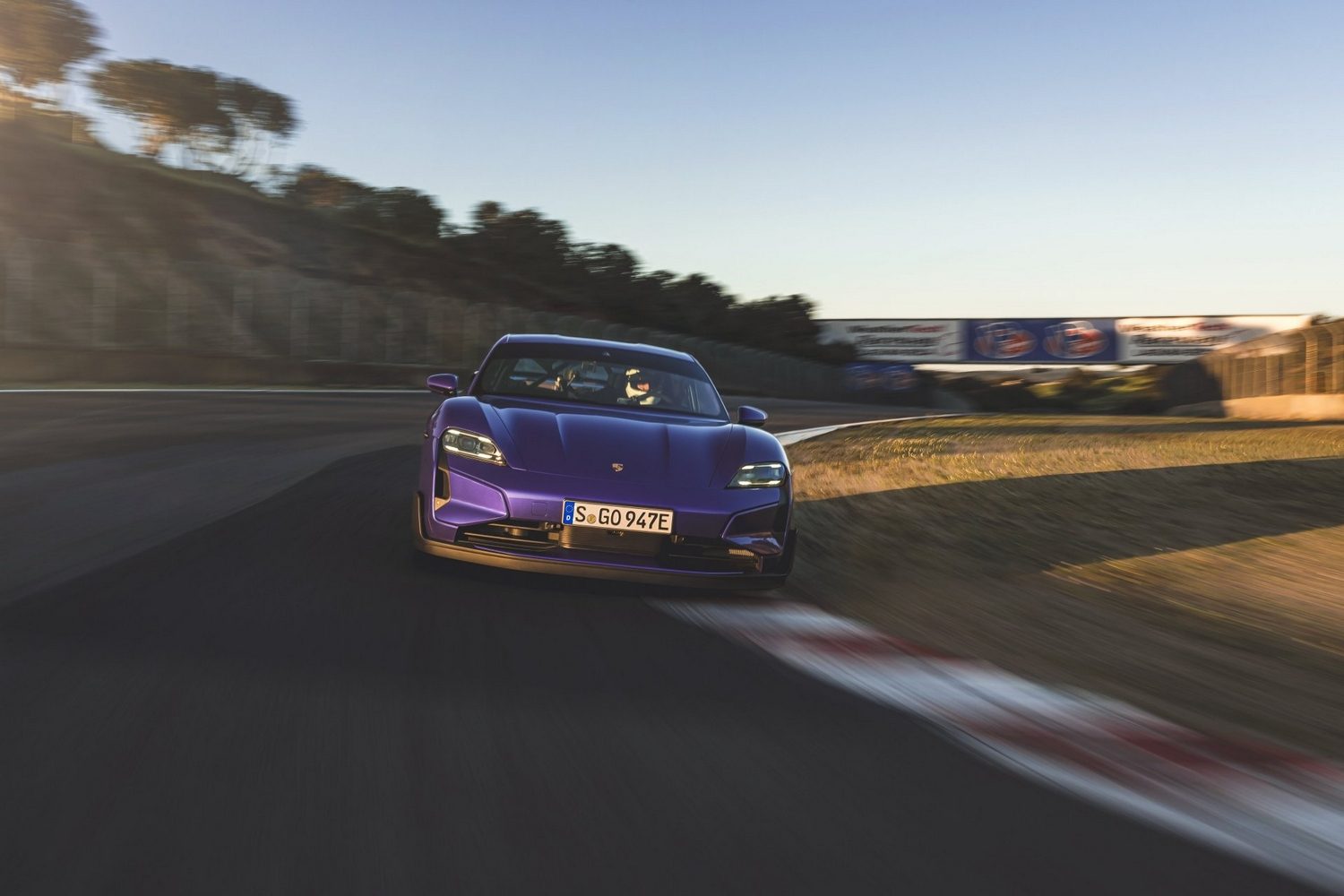
But while it's undoubtedly impressive, the braking system can't take all the credit for that. Porsche has fettled the suspension, too, so the Turbo GT is mighty through the corners. Porsche's Leipzig track is a bit of a 'greatest hits' album for the world's most famous racetracks, with most of the corners representing well-known bends. The Bus Stop at Spa-Francorchamps is there, as is the fearsome Corkscrew from Laguna Seca - a track at which the Turbo GT holds the electric car lap record.
Yet despite being faced with some of the greatest challenges known to motorsport, the Turbo GT greedily swallowed everything in front of it with ease. Often, on these laps, there's a sense of travelling at the ragged edge, with the car constantly shifting around at the limit of adhesion, but not so in the Turbo GT. The car stays level even in the fastest bends.
It's not that our driver, a Porsche development driver, wasn't quick - he was in "attack mode" for much of the lap - but the car just felt unbelievably stable and unflustered. Only the Corkscrew replica, with its elevation change, made the car feel a bit light and skittish on its suspension, but otherwise it was as planted as if it were navigating the Red Cow interchange in rush hour. Was that driving skill or vehicle engineering? Probably a bit of both, but it was impressive nonetheless.
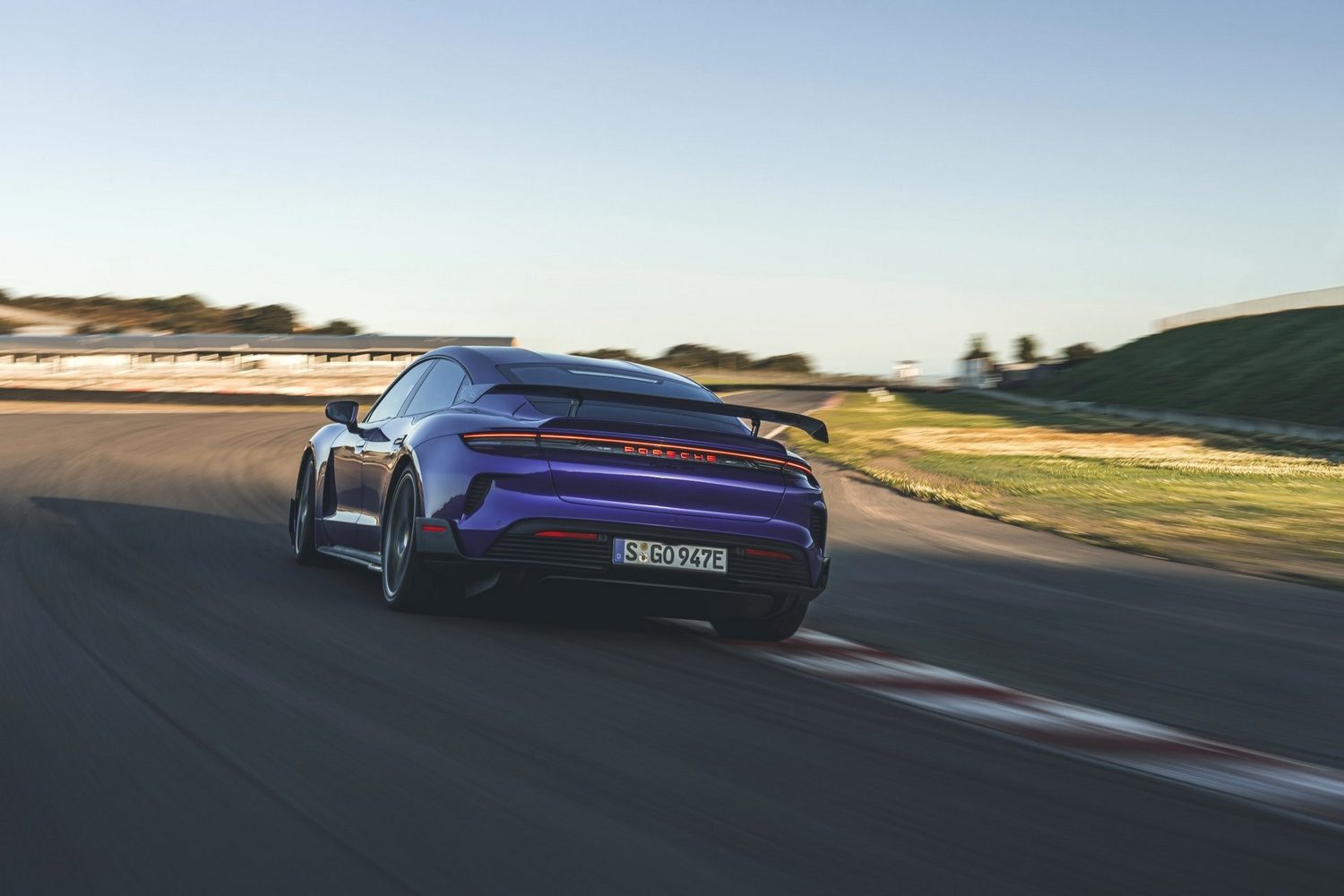
Also impressive is Porsche's official range figure. While unlikely to be achieved in the real world, not least because of all the power and performance, the official range is up to 554km, and that isn't so much less than you get from a Turbo S model. Unsurprisingly, on our quick track blast, we didn't garner much useful information about real-world range, but it seems likely that the Turbo GT will be usable on longer journeys - particularly with its 270kW fast-charging capabilities inherited from other Taycan models.
What you get for your money
Irish prices for the basic Turbo GT start at a heady €226,024, which is an awful lot of money. In fact, it's €36,000 more than you'll pay for the Taycan Turbo S and €150,000 more than a standard Taycan will set you back. But then it does have almost three times the power of that base model. Weirdly, the Weissach package reduces the price by €106, although we doubt that will make much difference to buyers.
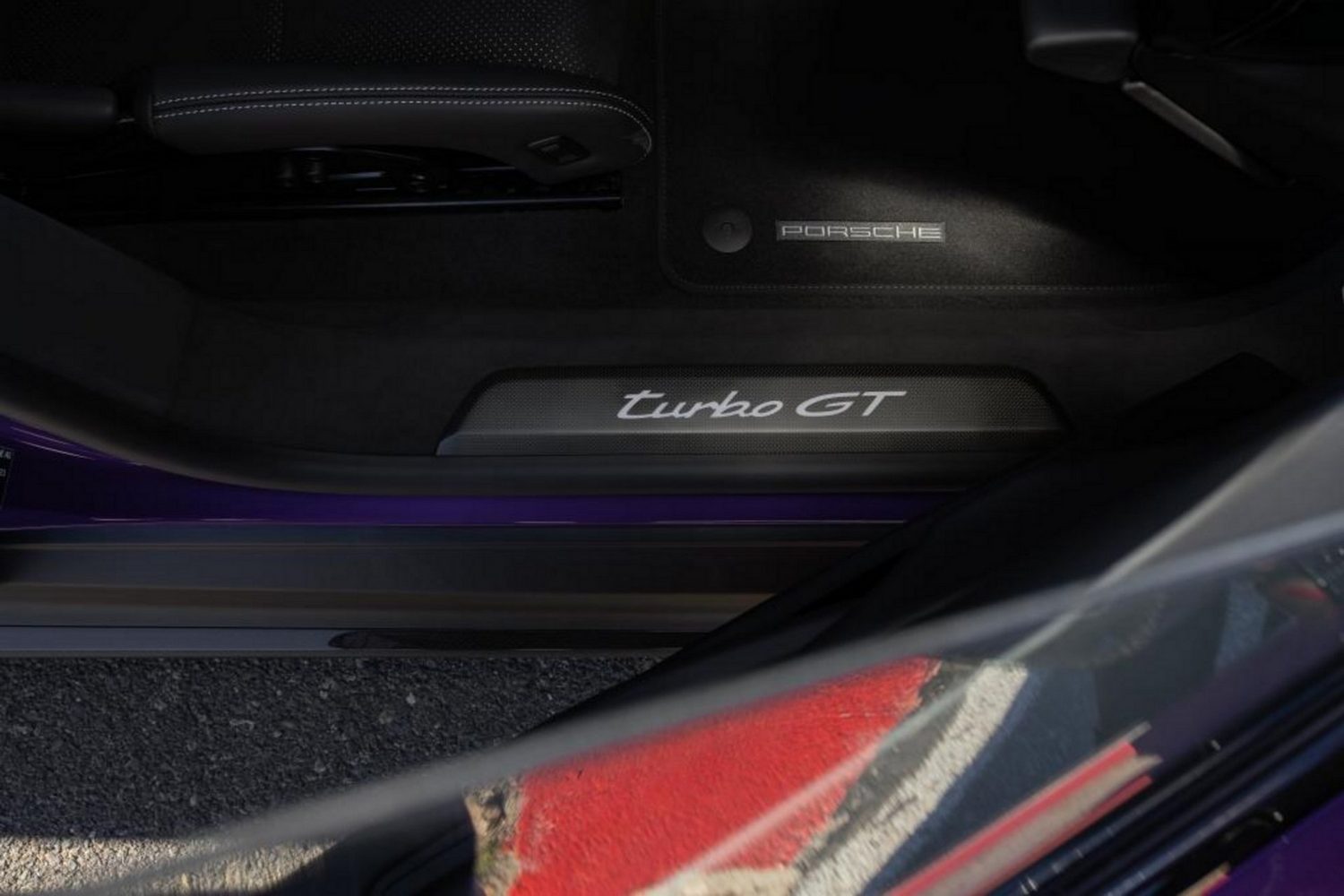
Weissach pack or not, standard equipment is comprehensive, with lightweight seats (proper, more upmarket ones are a no-cost option), all the digital displays and comfort features included in the price. But goodies such as a head-up display and a posh sound system will all cost more, which leaves you with a mightily expensive car once you've specified everything you might want. Still, thanks to emission-based tax rules in Ireland, it's cheaper to buy than a Porsche 911 GT3 with half the power. And no, that isn't hyperbole.
Summary
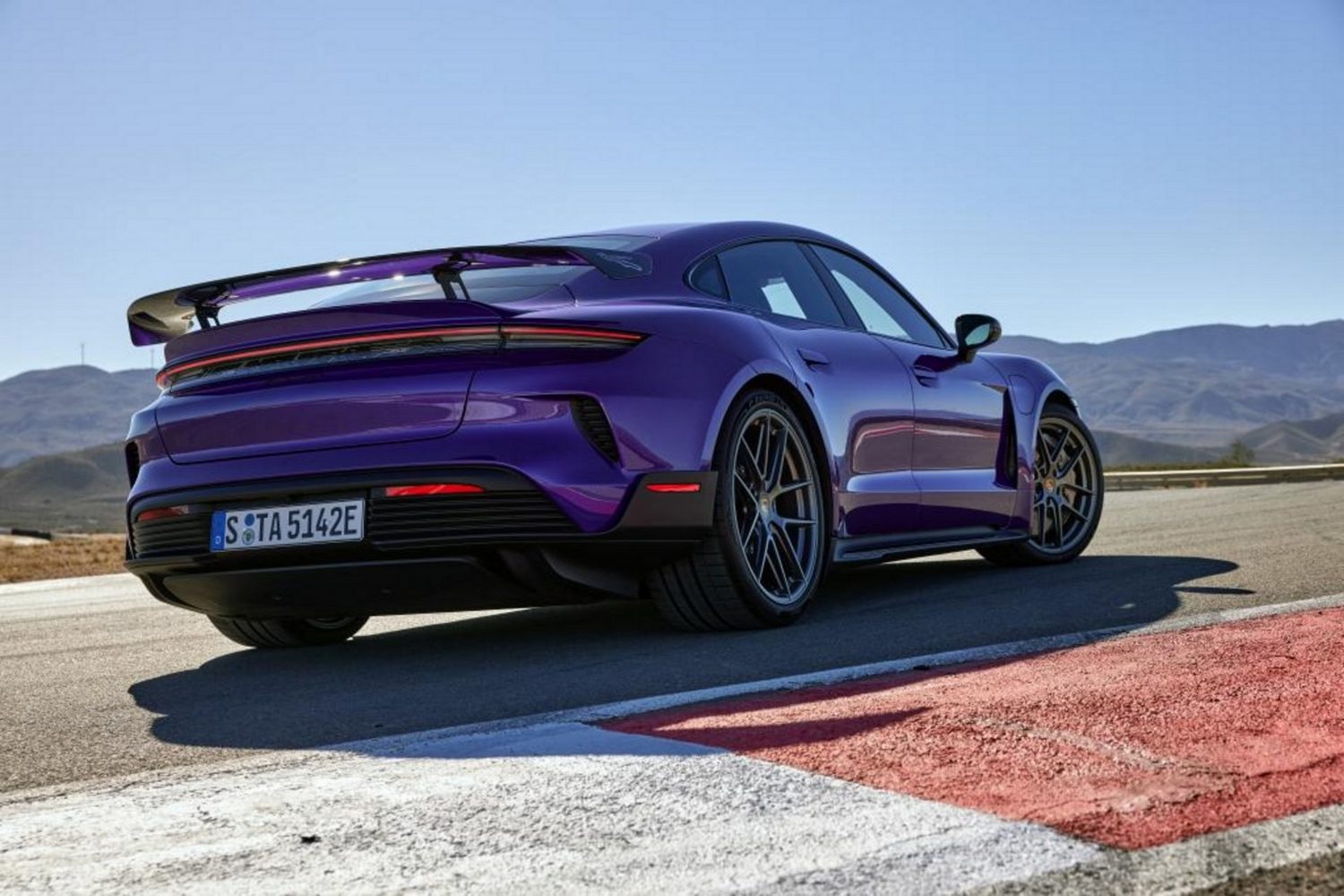
It's too early to draw conclusions about a car we haven't driven yet, but the quick passenger ride left a lasting impression. We knew the Turbo GT would be fast in a straight line, and we knew it would be at least as good to drive as its siblings, but the ease with which it tackles some of the world's most difficult corners has us wondering whether this might just be the best high-performance electric car we've seen so far.

